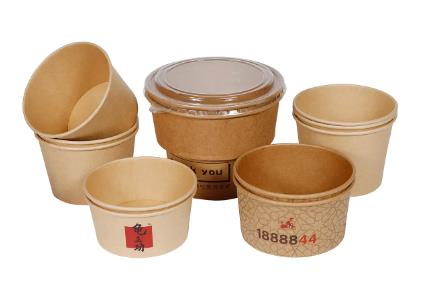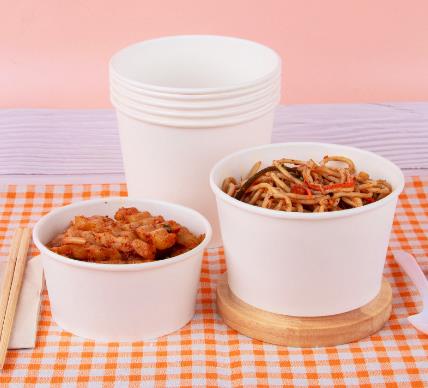
Content Menu
● Benefits of Large Disposable Bowls with Lids
>> 1. Preservation of Freshness
>> 2. Hygienic and Contamination-Free
>> 3. Portability and Leak Resistance
>> 4. Eco-Friendly Options
>> 5. Cost-Effective for Bulk Use
● Material Comparison: Choosing the Right Bowl
● Applications Across Industries
>> Food Catering and Events
>> Meal Prep Services
>> Household Use
>> Food Trucks and Takeout Services
● How to Select the Ideal Bowl
● Conclusion
● FAQs
>> 1. Are disposable bowls with lids microwave-safe?
>> 2. Can I compost biodegradable bowls?
>> 3. What sizes are available for bulk purchases?
>> 4. Do these bowls prevent spills during travel?
>> 5. How do disposable bowls compare cost-wise to reusable containers?
Large disposable bowls with lids have revolutionized food storage for households, caterers, and food businesses. Combining convenience, hygiene, and versatility, these containers address modern needs for efficient meal prep, transport, and waste reduction. Below, we explore their benefits, applications, and key considerations.

Benefits of Large Disposable Bowls with Lids
1. Preservation of Freshness
Airtight lids on large disposable bowls prevent exposure to air, slowing oxidation and bacterial growth. This is critical for salads, soups, and perishable items. The secure seal also locks in moisture, ensuring foods like grains or roasted vegetables retain their texture.
2. Hygienic and Contamination-Free
Single-use design eliminates cross-contamination risks, making these bowls ideal for hospitals, schools, and catering. Unlike reusable containers, there's no residue buildup, ensuring compliance with food safety standards. This is particularly important in environments where food safety is paramount.
3. Portability and Leak Resistance
Lightweight yet durable materials like PET plastic or kraft paper withstand transport without spills. Lids with tamper-evident features add security for takeout meals. The ability to stack these bowls makes them easy to store and transport without taking up too much space.
4. Eco-Friendly Options
Many large disposable bowls use biodegradable materials like sugarcane fiber or PLA-lined paper, reducing landfill waste. Compostable options align with sustainability goals for businesses and consumers. These environmentally friendly choices are increasingly appealing to eco-conscious consumers.
5. Cost-Effective for Bulk Use
Purchasing wholesale reduces costs for events or food businesses. Eliminating dishwashing labor further saves time and resources. For caterers and restaurants, the cost savings can be significant when serving large groups.
Material Comparison: Choosing the Right Bowl
| Material | Best For | Microwave Safe? | Eco-Friendliness |
| PET Plastic | Hot soups, stews | Yes | Recyclable |
| Kraft Paper | Salads, cold snacks | No (unless PLA-lined) | Compostable |
| Sugarcane Fiber | Greasy or hot foods | Yes | Biodegradable |
| PLA Bioplastic | All temperatures | Yes | Industrial compost |

Applications Across Industries
Food Catering and Events
Large disposable bowls with lids streamline buffet setups, keeping dishes fresh for hours. Their stackable design optimizes space in transport and allows easy serving at events. Caterers appreciate the ease of setup and cleanup that these bowls provide.
Meal Prep Services
Portion-controlled containers simplify subscription meal kits. Clear plastic bowls allow customers to view contents without opening them, enhancing the customer experience by providing visibility into what they are purchasing.
Household Use
Families use these bowls for picnic leftovers, freezer storage, or organizing pantry items. The versatility of large disposable bowls makes them suitable for various household needs—from storing snacks to preparing meals ahead of time.
Food Trucks and Takeout Services
With the rise of food trucks and takeout services, large disposable bowls have become essential for serving customers quickly while maintaining food quality. They allow for efficient service without compromising on presentation.
How to Select the Ideal Bowl
1. Capacity Needs:
- 16–24 oz: Individual meals or side dishes.
- 32–48 oz: Family-sized portions or larger servings for gatherings.
2. Lid Type: Opt for snap-on or hinged lids for liquid-heavy foods to prevent spills during transport.
3. Customization Options: Branded bowls enhance marketing for food trucks or delis by providing an opportunity to showcase logos or designs that resonate with customers.
4. Temperature Tolerance: Consider whether you need bowls that can withstand hot foods or if cold storage is sufficient.
5. Storage Requirements: Evaluate how much space you have available for storing bulk quantities of disposable bowls before making a purchase.
Conclusion
Large disposable bowls with lids offer unmatched practicality for food storage, combining hygiene, cost savings, and environmental adaptability. As demand grows for sustainable and efficient solutions in both commercial and home kitchens, these containers will remain indispensable in modern food management practices.

FAQs
1. Are disposable bowls with lids microwave-safe?
Most PET plastic and PLA-lined bowls tolerate microwave reheating well; however, avoid using plain kraft paper bowls as they may not withstand heat properly.
2. Can I compost biodegradable bowls?
Yes! Sugarcane fiber and PLA bowls break down effectively in industrial composting facilities designed to handle such materials.
3. What sizes are available for bulk purchases?
Wholesalers like Alibaba offer a range of sizes from 16 oz to 48 oz bowls, often providing discounts on orders of 1,000 units or more.
4. Do these bowls prevent spills during travel?
Snap-on or tamper-evident lids significantly minimize leakage risk even when transporting liquid-heavy dishes like soups or stews.
5. How do disposable bowls compare cost-wise to reusable containers?
While reusable containers have higher upfront costs due to their durability, disposable bowls save long-term labor costs associated with washing dishes and managing inventory.

















